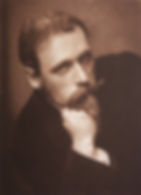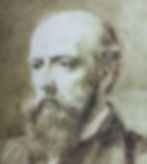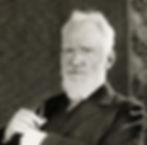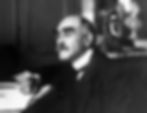
Walker and The Arts & Crafts Movement
Emery Walker was a key member of many organisations that propagated
the ideals of the Arts & Crafts Movement.
These bodies included the Art Workers’ Guild, the Society for the Protection of Ancient Buildings (SPAB), the Socialist League and the Arts & Crafts Exhibition Society.
Emery was a committed Socialist, and became the Secretary of the Democratic Federation's Hammersmith Branch, which went on to become the Socialist League. He organised their Sunday lectures at the coach house at Kelmscott House, now the headquarters of The William Morris Society.
The house contents reveal evidence of his friendships with many of the most influential artistic, political and literary figures of the late 19th and early 20th centuries. Many of these people, such as Count Harry Kessler and Bruce Rogers, were involved in the revival of fine printing and the private press movement in the 20th century, of which Walker is considered the father.
Walker’s influence in the Arts & Crafts Movement is evident in 7 Hammersmith Terrace because of the preservation in situ of his personal possessions. When clearing and cataloguing the House for its recent restoration, volunteers came across a wealth of material now available in the Archive giving an insight into the man and his close circle of friends. On opening a book they would find letters from Walter Crane or Rudyard Kipling used as bookmarks; and the drawer in his desk still contains several pairs of Morris’ spectacles and a cutting of his hair. Walker was the executor and chief beneficiary of his close friend Philip Webb and the house contains designs and craftsmanship of many other colleagues in the Arts & Crafts Movement.
An extract from his daughter Dorothy’s diaries, the early volumes of which are in the house, tell of the illustrious company Walker kept: ‘August 20, 1903: G.B.S has just sent D[addy] ‘Man and Superman’ – seems most amusing’. George Bernard Shaw lived next door at No. 8 for a while with May Morris. Walker’s friendship with Shaw had its roots in shared political interests, but was sustained by common literary and artistic appreciation.
Explore the house where we have highlighted some of his most significant Arts & Crafts treasures.

William (Mar 1834 – Oct 1896) and Jane (Oct 1839 - Jan 1915). Both good friends of Walker. Jane by John Robert Parsons, copied by Emery Walker Ltd. July 1865. Jane was a model and muse to William, whom she later married.

Mar 1862 – Oct 1938. May was an English artisan, embroidery designer, jeweller, socialist, and editor. She was the younger daughter of William Morris and Jane Morris.

Aug 1845 – 1Mar 1915. An English artist and book illustrator. He is considered a highly influential children’s book creator of his generation.

Jan 1831- Aug 1915. Painting by Charles Fairfax Murray, 1873 National Portrait Gallery. Arts & Crafts architect and founder of SPAB. A close friend of Walker's, he left many personal possessions to him in his will that can be seen at the house.

July 1856 – Nov 1950. An Anglo-Irish playwright, critic, and polemicist whose influence on Western theatre, culture, and politics extended from the 1880s to his death and beyond.

Dec 1865 - Jan 1936. An English journalist, short-story writer, poet, and novelist. He is regarded as a major innovator in the art of the short story.
